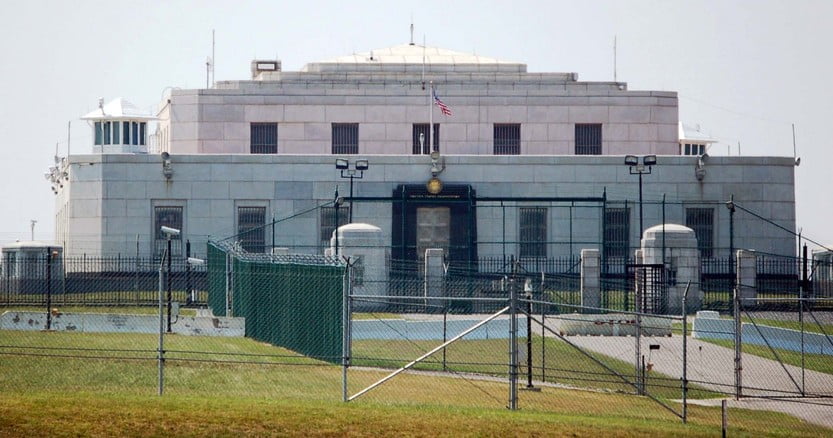Fort Knox is a 109,000 acre base that holds the U.S. Government federal gold reserve, but also the Army Human Resources Center of Excellence. The building was originally opened as a depository for gold, but has also been home of the U.S. Army Armor Center for 60 years.
History
Fort Knox was originally opened in 1937 as a depository for gold. Nowadays, the building is one of the most secured places, if not the most secured places in the world. There was a time when the building was used as a military training camp. Deep inside the walls of the building, lies the wealth of the United States. In 1937, construction of the building cost $560,000. For construction of the project, the government needed 16,000 cubic feet of granite, 750 tons of reinforcing steel, 670 tons of structural steel, and 4,200 cubic yards of concrete.
Three non-gold artifacts stored at Fort Knox
We all know the Ford Knox as the vault for gold. But there are many precious non-gold items stored there. And one can say they have more value than the gold reserve.
The first one is the Magna Carta, a document that has traveled the world. One of the four known copies of the document was stored in Fort Knox during World War II and up to 1947. Then, the document was returned to the Lincoln Cathedral.
The Constitution is another historical document that was stored in Fort Knox during World War II. The Declaration of Independence was held there as well. These two documents were moved to Fort Knox just two weeks before the Pearl Harbor attack. The documents were stored in a kept under lock and key, sealed with lead, and then placed in another protective container. The documents were returned to D.C. in 1944.
Fun Facts
– Visitors are allowed to stand outside of the gate of Fort Knox. They can even take pictures, but they are not allowed inside
– One gold bar in Fort Knox weighs 27.5 pounds
– Some parts of James Bond “Goldfinger” were filmed at Fort Knox
– The building was named after Henry T. Knox, a general at the Revolutionary war
– Gold has not been transferred to or from the Depository for many years. However, there are times when small quantities are removed to test the purity of gold during scheduled audits.
Gold reserves
The building is most famous as the U.S. Government facility for storing gold reserves. Currently, Fort Knox houses 147.3 million ounces of gold. At the current rate and price of gold, that is about $270 billion, which is less than one third of the US debt.
The gold is stored in a shape of a bar. The gold bars are 7 inches in length, and 3 inches in width. Each par weighs 400 ounces, or 27.5 pounds.
The highest amount of gold that was ever stored in Fort Knox is 649.6 million ounces. That is reserve the US had in 1941.
The defensive system of Fort Knox
Here are some things you need to know about the defense of Fort Knox. There is a reason why the building is the most secure building in the world.
– Fort Knox has the world’s hardest shell, with the walls featuring 4 foot thick granite, lined with cement, steel, and fire-proof material. The depository can actually withstand a direct hit from an atomic bomb
– The front door weighs 22 tons and is made of blast-proof materials. No single person can enter the vault. To open the depository, several staff members have to dial separate combinations, and they are changed on a daily basis
– The surveillance system is second to none. There are multi-focus surveillance systems at every corner of the Depositor, putting every square inch under surveillance at all times
– The ultimate safe is protected by 27 inches thick vaults made of steel and concrete. Same as the walls, the vaults can withstand atomic bombs
– The depository also has a barrier within a barrier system. There is a system of barriers and defenses that make the Depository virtually impenetrable. The original barrier was built in 1937, and features fence with iron barrier forming an octagonal defense around the building. The first barrier is a simple wire fence that surrounds the outermost perimeter and has motion sensors along. The second barrier is a 10 foot electrical fence with concrete support. The third and final barrier is in rectangular shape, and has doorways and patrolling guards protecting it.
– There are also some features that have been speculated over the years. However, none is officially confirmed. For example, there is a report of a virtual trip wires that can alert security personal when an object is 15,000 feet away. These wires can make a difference between a moving car and a person walking around. In terms of biometrics, the Fort Knox is rumored to feature stereo camera that can point features altered by plastic surgery. It is also widely believed that there is a system of land mines positioned between the second and the third barrier. Last, but not least, the vaults are reportedly protected by a satellite defense system that can identify extraterrestrial dangers.



